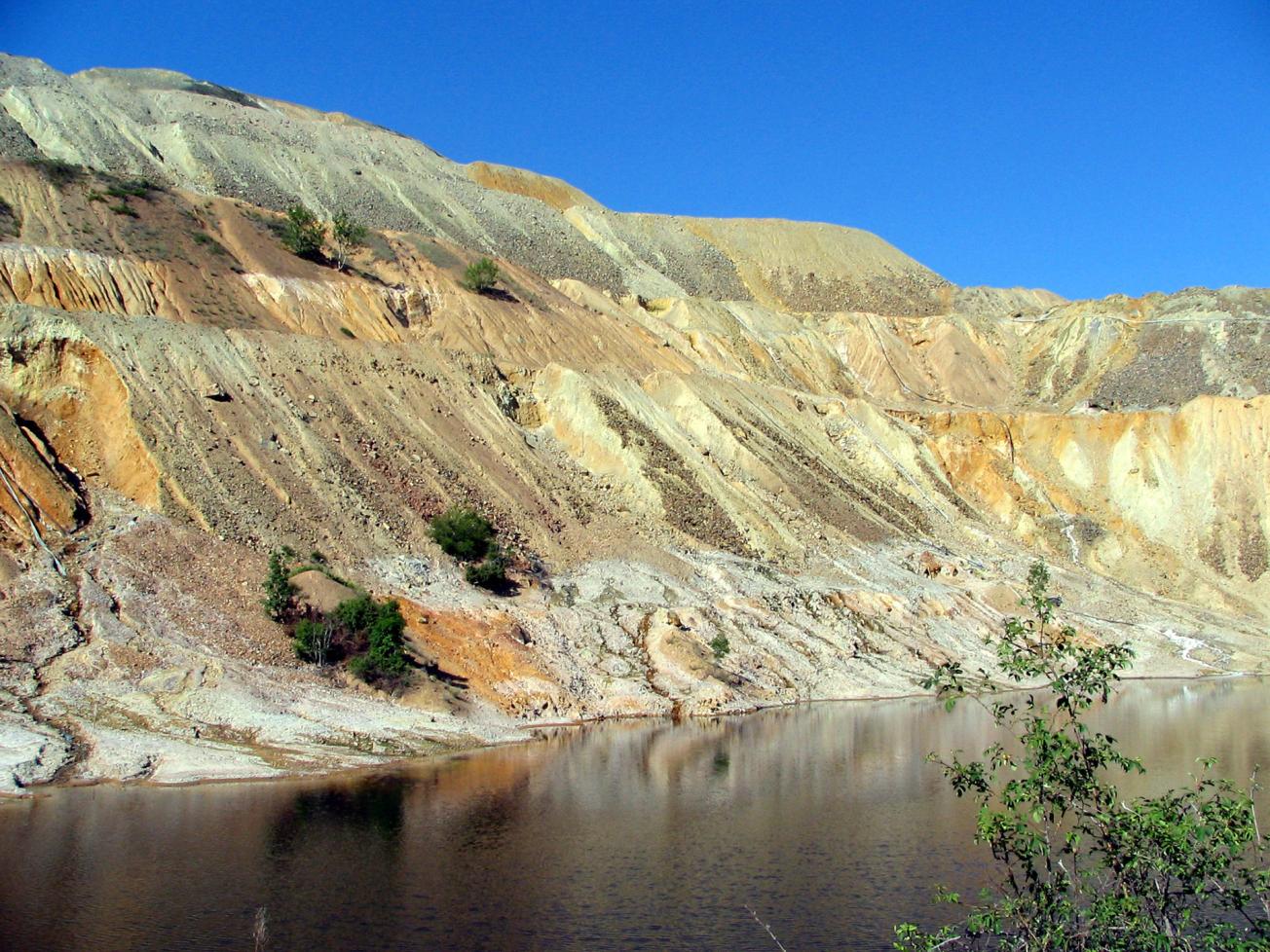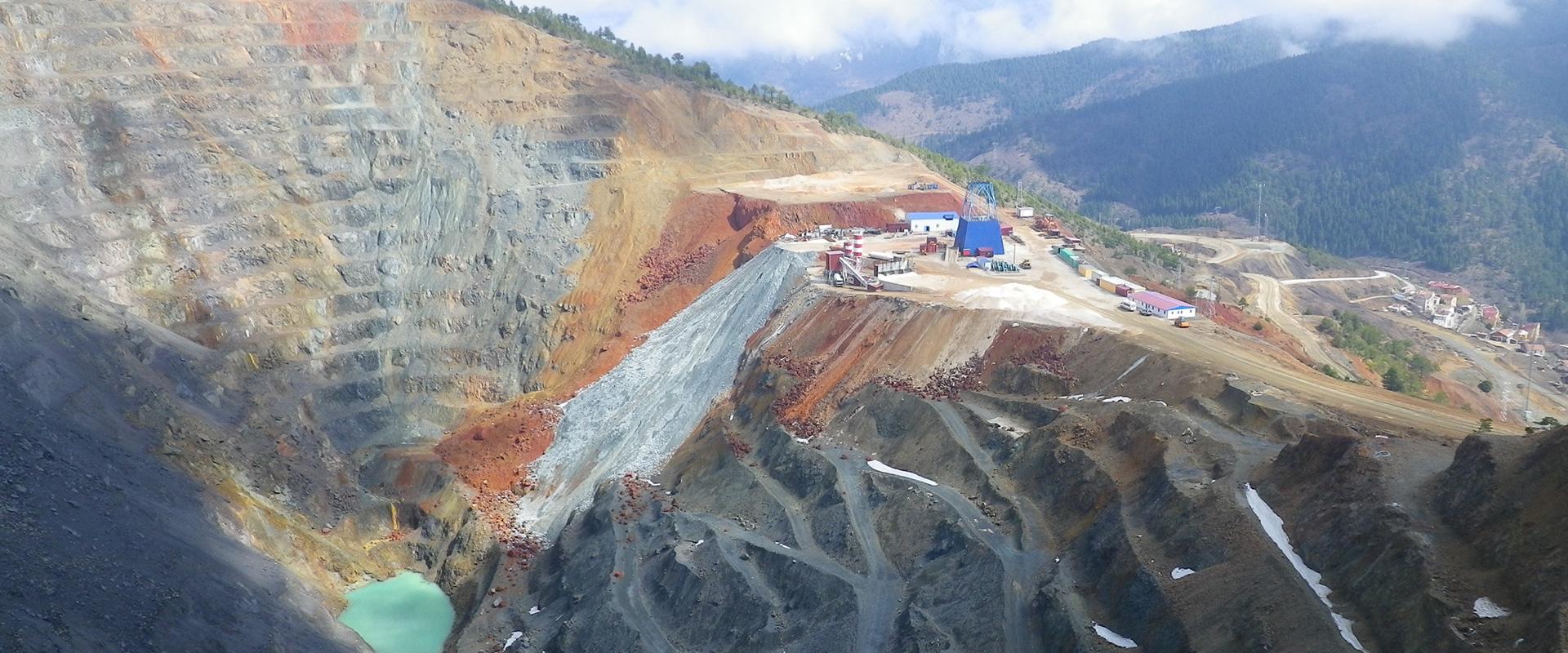
Storage of mining waste awaiting reprocessing (Bulgaria, 2007).
© BRGM - Patrick d’Hugues
Mining waste containing metals is generated during the extraction and processing of metal ores. This waste can be considered a valuable secondary resource containing base metals (lead, zinc and copper) and rare metals (gold and silver). But the presence of elements that are dangerous for the environment with threats to the air, soil and water, must be taken into account.
Circular economy: recovering base and rare metals from mining waste
The European MINTECO project, coordinated by BRGM, aims to assess the possibilities of reprocessing mining waste to recover metals, based on case studies in Romania, Turkey and Poland.
The project is based on experimental tests in laboratories. It includes the following stages:
- pre-treatment by physical separation,
- hydrometallurgy/metal recovery,
- development of a coherent global processing scheme,
- environmental impact and economic studies.
Large volumes of mining waste
Most of the solid mining waste is disposed of in tailings ponds without active management. In addition, large volumes are still being produced. For example, each year, the mining industry in Poland produces about 50 tonnes of waste, 20% of which is produced during extraction while the rest is generated by the treatment process.
Partners
The project involves 8 partners:
- research institutes (INOE and IMNR, Romania; BRGM, France),
- two universities (MEERI, Poland; ESOGU, Turkey)
- three SMEs specialised in mining processing (Romaltyn Mining SRL, Romania), in metal sales (TGM, Poland) and in the design and sale of specific ion exchange materials for the targeted metals (AJELIS, France).







